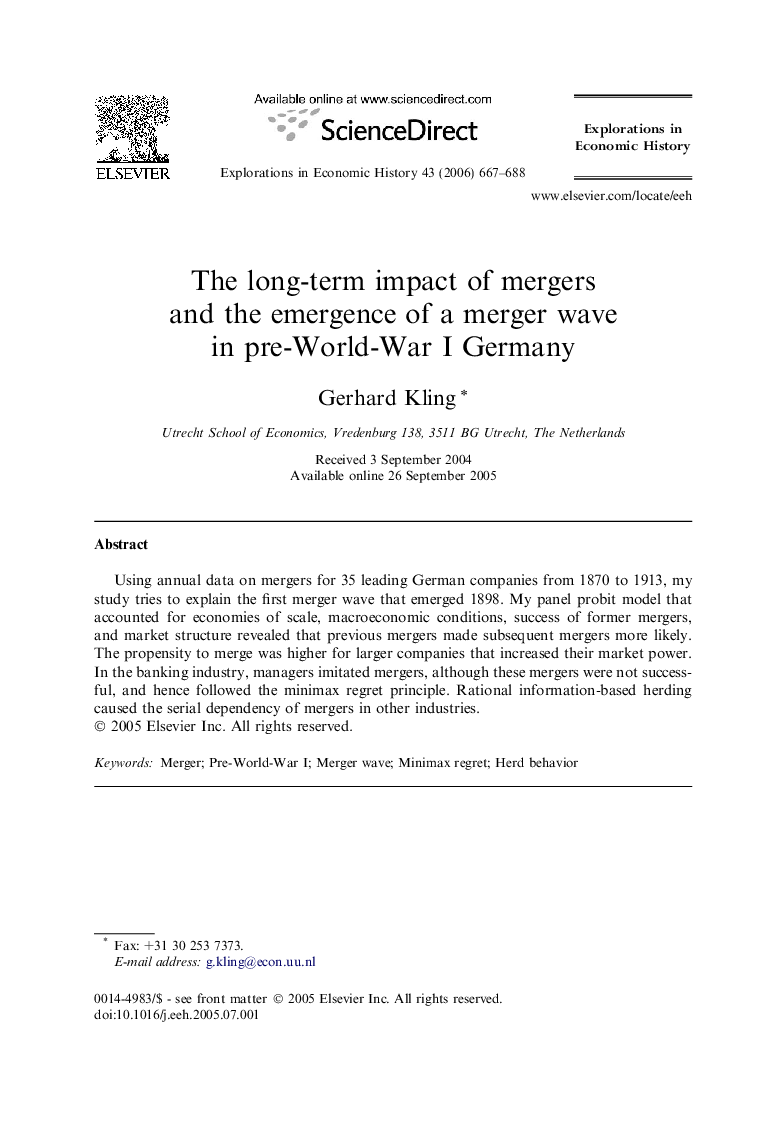| Article ID | Journal | Published Year | Pages | File Type |
|---|---|---|---|---|
| 5069135 | Explorations in Economic History | 2006 | 22 Pages |
Abstract
Using annual data on mergers for 35 leading German companies from 1870 to 1913, my study tries to explain the first merger wave that emerged 1898. My panel probit model that accounted for economies of scale, macroeconomic conditions, success of former mergers, and market structure revealed that previous mergers made subsequent mergers more likely. The propensity to merge was higher for larger companies that increased their market power. In the banking industry, managers imitated mergers, although these mergers were not successful, and hence followed the minimax regret principle. Rational information-based herding caused the serial dependency of mergers in other industries.
Keywords
Related Topics
Social Sciences and Humanities
Arts and Humanities
History
Authors
Gerhard Kling,
